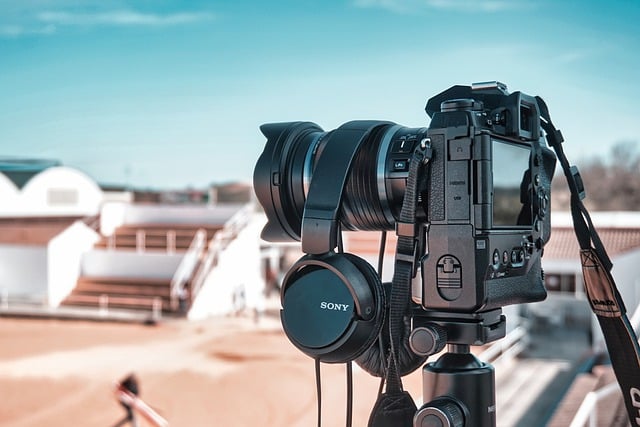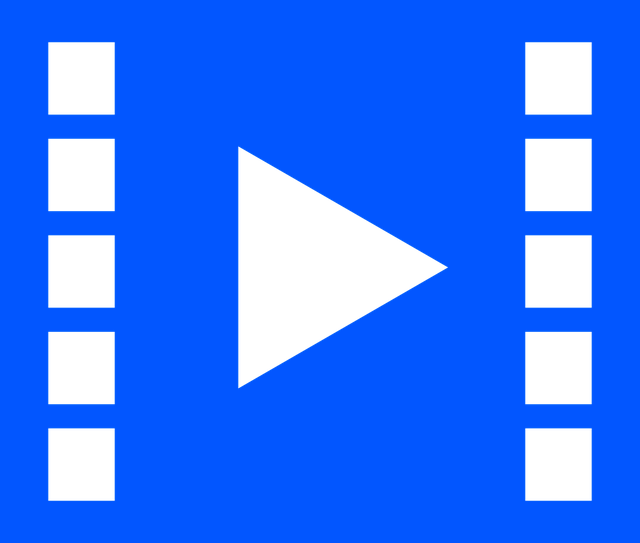In the evolving digital media landscape, the Convert DivX to MOV process is a game-changer, ensuring legacy video content remains accessible and shareable on modern devices. This transition offers enhanced compression efficiency, improved visual and audio quality, and better synchronization. By bridging the gap between DivX and MOV formats, this technology simplifies video distribution, playback, and editing workflows, fostering an inclusive ecosystem for content creators and consumers worldwide.
In the ever-evolving digital media landscape, pioneering innovations are crucial for seamless content consumption. One such game-changer is the process of converting DivX to MOV formats. This article delves into the intricacies of these popular video codecs and why their compatibility challenges necessitate conversion. We explore the technology behind it, uncover the benefits, and envision future implications on digital media. Discover how converting DivX to MOV is revolutionizing access and enhancing multimedia experiences for folks worldwide.
Understanding DivX and MOV Formats: A Quick Overview

DivX and MOV are two distinct video formats, each with its own set of features and uses. DivX, short for Division X, is an open-source compression standard known for delivering high-quality video in relatively small file sizes. This format has been widely used for streaming and online video content due to its efficient compression algorithms that minimize data loss while maintaining visual clarity.
On the other hand, MOV (QuickTime) is a container format developed by Apple Inc., primarily used for storing digital video and audio streams. It supports a wide range of codecs and offers excellent compatibility across various devices and platforms. The ability to Convert DivX to MOV is valuable, especially in situations where content needs to be shared or played back on different systems, ensuring maximum accessibility without sacrificing quality.
The Need for Conversion: Overcoming Compatibility Challenges

In the ever-evolving landscape of digital media, the need for seamless conversion and compatibility has never been more pressing. With numerous formats dominating the market, users often find themselves in a labyrinthine maze of file types, struggling to access their desired content. This challenge is particularly acute when dealing with older formats like DivX, which have sadly fallen out of favor with time. The demand for converting DivX to MOV, for instance, reflects this struggle, as users seek to enjoy their legacy media without compatibility hurdles.
Overcoming these challenges requires innovative solutions that bridge the gap between different formats. With proper conversion tools, users can easily transform DivX videos into MOV format, ensuring compatibility with modern devices and platforms. This not only enhances accessibility but also preserves valuable digital content, allowing folks to reminisce and share their past experiences without the hassle of format restrictions.
Unlocking the Potential: Why Convert DivX to MOV?

In the ever-evolving landscape of digital media, the need for seamless compatibility and optimal video quality is paramount. This is where the innovative process of converting DivX to MOV comes into play, unlocking a world of potential for content creators and consumers alike. DivX, known for its robust compression and playback capabilities, has long been a popular format among enthusiasts. However, as technology advances, newer formats like MOV (also known as QuickTime) offer improved features such as better compression efficiency, enhanced visual quality, and wider compatibility with modern devices and platforms.
Converting DivX to MOV serves multiple purposes. Firstly, it ensures that legacy content remains accessible and viewable on contemporary systems without the need for additional codecs or players. Secondly, it allows for easier sharing and distribution, especially across different operating systems and media-playing applications. By transcoding DivX videos into MOV format, users can take advantage of advanced features like better synchronization, enhanced sound quality, and improved support for special effects, thereby elevating the overall viewing experience.
Exploring the Technology Behind Seamless Conversion

The world of digital media has witnessed a remarkable evolution, and one pioneering innovation stands out: seamlessly converting DivX to MOV format. This technological marvel has unlocked new possibilities for users by providing an efficient and high-quality conversion process. The underlying technology involves advanced video compression algorithms that accurately translate DivX files into the MOV container, preserving original quality without compromising speed.
This conversion is made possible through sophisticated software that cleverly interprets DivX’s complex coding and transforms it into a format compatible with various media players and devices. By seamlessly bridging these two formats, users can enjoy their content across different platforms, ensuring accessibility and convenience. Whether for personal projects or professional applications, the ability to effortlessly convert DivX to MOV has revolutionized how we manage and share digital media.
Benefits of Adopting This Groundbreaking Innovation

Adopting the latest groundbreaking innovation in digital media offers numerous advantages, especially for content creators and consumers alike. One such example is the seamless conversion from DivX to MOV format. This process simplifies video distribution and playback by eliminating compatibility issues between different codecs. By converting DivX videos to MOV, users can ensure their content is accessible on a wide range of devices and platforms without worrying about playback problems.
Moreover, this innovation streamlines video editing workflows, enabling professionals to work with various media formats more efficiently. MOV format, being widely supported by professional editing software, allows for easier manipulation, enhancing the creative process. Additionally, the conversion process preserves high-quality video and audio, ensuring that the original content integrity is maintained throughout. This advancement in digital media technology opens up new possibilities for content creators to share their work seamlessly and enhances the overall viewing experience for audiences worldwide.
Future Implications: The Impact on Digital Media Landscape

The introduction of a groundbreaking technology, capable of seamlessly converting DivX to MOV, has profound implications for the digital media landscape. This innovation streamlines content accessibility and compatibility, bridging gaps between different formats and platforms. As more users and devices embrace digital media, the ability to effortlessly convert between popular video formats becomes increasingly vital.
Looking ahead, this technology promises to democratize access to multimedia content, fostering a more inclusive digital ecosystem. It enables creators and consumers alike to navigate the complex world of digital media with ease, potentially driving new trends in content creation and consumption patterns. The impact extends beyond convenience; it paves the way for enhanced collaboration and accessibility across devices and platforms.
The conversion from DivX to MOV format represents a significant leap forward in digital media innovation. By seamlessly bridging these two formats, this groundbreaking technology addresses compatibility challenges and unlocks new possibilities for content creators and consumers alike. As we look ahead, the adoption of this seamless conversion method promises to revolutionize the digital media landscape, offering enhanced flexibility and improved user experiences. The future of digital media is here, and it’s based on the innovative power of converting DivX to MOV.
